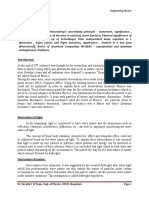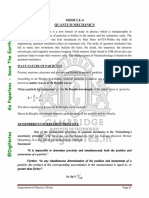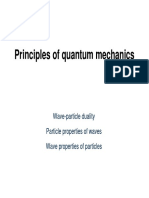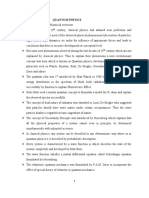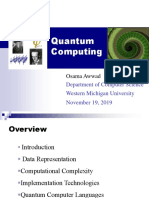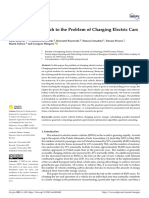0% found this document useful (0 votes)
61 views20 pagesModule1 - Quantum Mechanics & Quantum Computing
This document covers the fundamentals of quantum mechanics, focusing on the Heisenberg Uncertainty Principle and its implications for measuring the properties of particles. It discusses the significance of wave functions and their normalization, as well as the application of Schrödinger's time-independent equation in determining energy values and probability densities for particles in potential wells. The document also introduces concepts such as eigenfunctions and eigenvalues in quantum mechanics.
Uploaded by
shreyasdbangeraaCopyright
© © All Rights Reserved
We take content rights seriously. If you suspect this is your content, claim it here.
Available Formats
Download as PDF, TXT or read online on Scribd
0% found this document useful (0 votes)
61 views20 pagesModule1 - Quantum Mechanics & Quantum Computing
This document covers the fundamentals of quantum mechanics, focusing on the Heisenberg Uncertainty Principle and its implications for measuring the properties of particles. It discusses the significance of wave functions and their normalization, as well as the application of Schrödinger's time-independent equation in determining energy values and probability densities for particles in potential wells. The document also introduces concepts such as eigenfunctions and eigenvalues in quantum mechanics.
Uploaded by
shreyasdbangeraaCopyright
© © All Rights Reserved
We take content rights seriously. If you suspect this is your content, claim it here.
Available Formats
Download as PDF, TXT or read online on Scribd
/ 20








